#data analysis services
Text
Outsourced b2b lead generation

Lead generation refers to a procedure to find, nurture, contact and convert leads into your potential buyers. Due to its complexity and criticalness, outsourcing to an experienced lead generation organisation can be helpful. With this outsourced B2b lead generation, your sales and efficiency can be developed in the sales procedure.
2 notes
·
View notes
Text
#bibliometric analysis#bibliometric analysis methodology#bibliometric analysis research paper#bibliometric and content analysis#bibliometric and content analysis pdf#bibliometric research#data analysis services#statistical data analysis
0 notes
Text
The Role of Statistics in Data Analytics for Consumer Packaged Goods
Introduction Consumer Packaged Goods: Data Analytics for Consumer Packaged Goods (CPG) industry, the integration of data into marketing strategies is vital for maintaining a competitive edge. Leading brands adopt...
0 notes
Text
The Power of Data in Industry Analysis Services: Unveiling Insights for Informed Decisions
The Power of Data in Industry Analysis Services is akin to having a crystal ball that reveals valuable patterns, trends, and opportunities. As we delve into this article, we will uncover the transformative impact of harnessing data for industry analysis and decision-making.
0 notes
Text
Data analysis dissertation help
Data analysis dissertation help: - Data analysis: - The process of transforming, cleansing, and analysing unprocessed data to extract pertinent, usable information that aids in decision-making for businesses is known as data analysis. By offering helpful information and insights—which are frequently shown in the form of tables, graphs, charts, and images—the process helps lower the risks associated with making decisions.

Every time we make decisions in our daily lives, we may observe a fundamental instance of data analysis in action by considering the past or the future consequences of our choice. In essence, this is the process of doing a study on the past or the future and then coming to a conclusion. Data Analysis Types There are now six widely used forms of data analysis that are frequently used in the business and technological domains. Are.
• Analysing Descriptively In descriptive analysis, a dataset's primary characteristics are summed up and described. The primary objective is to arrange and exhibit the data in a significant manner, frequently employing metrics like average, median, mode, as well as standard deviation. It gives a summary for the data and facilitates the discovery of trends or patterns.
• Deductive Analysis Using sample data, inferential analysis seeks to draw conclusions or forecasts about the broader population. It entails using statistical methods including regression analysis, confidence intervals, and hypothesis testing. It facilitates extrapolating results from an experiment to a broader population.
• Analysing exploratory data (EDA) EDA is concerned with analysing and comprehending the data without making assumptions. To find patterns, linkages, and intriguing aspects, it makes use of data profiling tools, summary statistics, and visualizations. It aids in the creation of theories for additional research.
• Analysis of Diagnostics Understanding the cause-and-effect linkages in the data is the goal of diagnostic analysis. It looks at the elements or variables that lead to particular results or actions. Diagnostic analysis frequently makes use of methods like regression analysis, correlation analysis, and ANOVA (Analysis of Variance).
• Estimative Evaluation Predictive analysis is the process of forecasting or predicting future events based on past data. To find trends and create prediction models, it makes use of machine learning algorithms, statistical modelling approaches, and time series analysis. It is frequently applied to risk assessment, consumer behaviour forecasting, and sales forecasting.
• Script-Based Evaluation By making recommendations for decisions or actions based on the forecasts, prescriptive evaluation goes beyond predictive analysis. To produce meaningful insights and maximize results, it integrates historical data, algorithms for optimization, and business rules. It facilitates resource allocation and decision-making.
Data analysis dissertation help: - One service that helps students analyse their study data is dissertation data analysis aid. Many academic service providers, notably, workingment offer it. The service can assist students with organizing their findings and/or discussion chapter, interpreting their dataset, and editing their paper. Workingment is an excellent resource to start with if you need assistance with the data analysis for your dissertation. They provide practical help with data analysis from a knowledgeable coach who can walk you through every stage of the procedure. In addition, they offer a variety of other dissertation assistance services, such as software support and content assessment.
Note: Join our Telegram group or check out our Instagram for further updates and questions about Do my assignment.
1 note
·
View note
Text
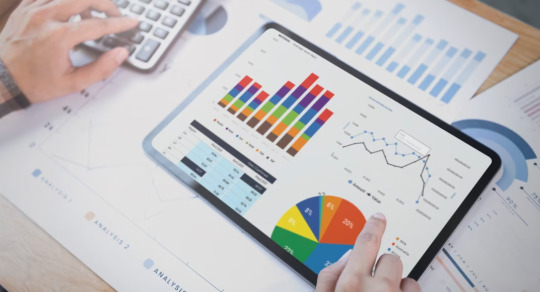
Sigma Solve provides intelligent data analysis services to transform raw data into actionable insights by collecting, processing and presenting data that helps in enhancing business processes. We develop customized scientific software solutions with powerful data analysis capabilities, empowering businesses to efficiently analyze.
0 notes
Text
0 notes
Photo
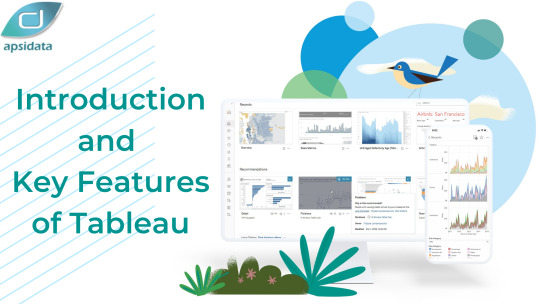
Introduction and Key Features of Tableau
Tableau is a generally utilized Business Intelligence device in the ongoing business sector. Tableau produces experiences from crude information and makes a visual work of art for organizations to pursue information-driven choices. Its prominence is because of its capacity of dealing with Big Data and is generally easy to send, learn and utilize.
Visit: https://medium.com/@jhones1998olivia/introduction-and-key-features-of-tableau-be94308b1b59
#market research services#data visualization services#data processing services#tableau#tableau services#data analysis services
0 notes
Link
#Statistical Data analysis#Data analysis#Data analysis in research#Data analysis services#Data analysis service providers#Data analysis services pricing#Statistical Analysis#Statistical Analysis in Research#SPSS analysis
0 notes
Text
No One Will Ever Teach You About Data Analytics in a Very Simple Way with Real-Time Examples
In today's modern digital world, data is all around us. Every time you use your smartphone, buy something online, or share something on social media, you're creating data. But why is data important, and how can we use it to make better decisions? That's where data analytics comes into play, and in this blog, we'll explain it in simple terms.

What is data analytics?
At its core, data analytics is like a detective for the digital world. It's the process of looking closely at data, cleaning it up, changing it into useful information, and figuring out what it tells us. This information helps people and organisations make smart choices, solve problems, and even guess what might happen in the future.
How does data analytics work?
Imagine you run a small ice cream shop in your neighborhood. You sell different flavours, from classic chocolate to unique mango. To run your shop well, you need to make good choices about which flavours to have and when to offer them. That's where data analytics can help, and I'll show you how it works using a simple example.

Data Collection
Every day, you keep a record of which ice cream flavours you sell and keep an eye on the weather. You also note whether it's a regular weekday or a fun weekend.
Data Analysis
After a few months, you have a pile of notebooks filled with sales data. You use a special computer programme to look at all this information.
Descriptive Analytics: You make graphs and charts to see which flavours are liked the most. For instance, you notice that chocolate sells well all year.
Diagnostic Analytics: Digging deeper, you discover patterns, like mango ice cream being a hit on hot weekends and vanilla being popular on weekdays.
Predictive Analytics
Here's where it gets exciting. Using past data, your analytics tool can make guesses. It tells you that the next weekend will be very hot. So, you decide to order more mango ice cream to be ready for the extra demand.
Prescriptive Analytics
Now, it's not just about guessing. You also get advice on what to do. Your analytics tool suggests that during the weekdays, you could offer a discount on vanilla to bring in more customers.
Implementing Changes
You follow the advice and give discounts on vanilla during the weekdays. You also make sure to have plenty of mango ice cream for the upcoming hot weekend.
Seeing Results
When the hot weekend comes, customers are happy to see lots of mango ice cream, and sales go up. On weekdays, the discount on vanilla brings in more customers and boosts sales.
This process keeps going, and you continue using data analytics to make good choices about flavours, discounts, and how much ice cream to have in stock. Your ice cream shop becomes more successful because you're using data to understand what customers like and how the weather affects sales.
In short, data analytics is like having a crystal ball for your business. It helps you understand what happened in the past (descriptive), why it happened (diagnostic), guess what might happen in the future (predictive), and suggest what you should do about it (prescriptive). Whether you run an ice cream shop or a big company, data analytics helps you make smarter decisions in real-time.
If you want to learn more about data analytics or need help using it in your business, you can talk to experts or take specialised courses. For example, ACTE Institute offers comprehensive data analytics training programmes that can give you the knowledge and skills you need, including job placement and certification. So, get ready to learn, explore the tools, and start turning data into valuable insights!
12 notes
·
View notes
Text
https://justpaste.it/9rxlg
#bibliometric and content analysis#bibliometric analysis#bibliometric analysis methodology#bibliometric analysis research paper#bibliometric and content analysis pdf#bibliometric research#data analysis services#statistical data analysis
0 notes
Text
#United States Directional Drilling Services Market#Market Size#Market Share#Market Trends#Market Analysis#Industry Survey#Market Demand#Top Major Key Player#Market Estimate#Market Segments#Industry Data
2 notes
·
View notes
Text
Precision Insights: Expert Quantitative Market Research Services
Our Quantitative Market Research Services help you quickly gather insights from our panellists and understand the changing consumer behaviour. Using our comprehensive services, we find the answers to the most of your questions! Follow this link to know more https://insighttellers.com/services/quantitative-research-market
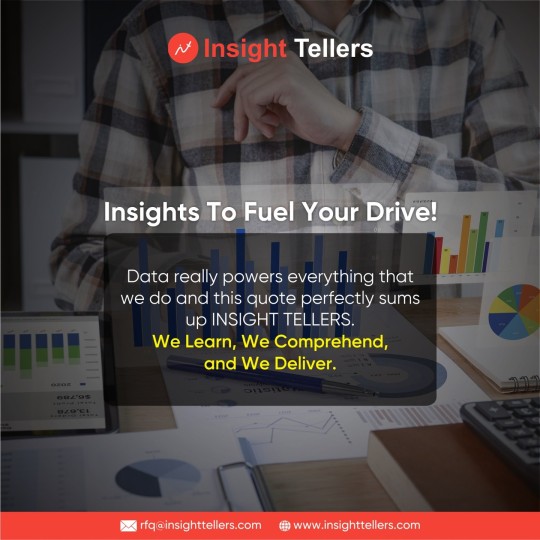
#Quantitative Market Research Services#Qualitative Research#Translation#Survey Programming#Data Collection & Analysis#Secondary Research#Panel Aggregation#Contracted Work
2 notes
·
View notes
Text
Unleashing the Power of AWS Lambda: Features, Benefits, and Practical Examples
Hey friends, check out this informative blog on the power of AWS Lambda! 🚀 Learn about its event-driven architecture, automatic scaling, and practical examples. #AWSLambda #ServerlessComputing #CloudComputing #ApplicationDevelopment
Introduction
In today’s digital era, scalability, flexibility, and cost-effectiveness are paramount for businesses to thrive. AWS Lambda, a serverless compute service provided by Amazon Web Services (AWS), has emerged as a game-changer in the world of cloud computing. In this comprehensive blog, we will delve deep into AWS Lambda’s features, explore its numerous benefits, and provide practical…

View On WordPress
#amazon web services#Application development#automatic scaling#AWS Lambda#chatbots#cost-effective#event-driven architecture#flexible applications#image processing#infrastructure management#operational overhead#programming languages#real-time data analysis#scalable applications#scheduled tasks#server management#serverless compute service#time to market
4 notes
·
View notes
Text
Data gathering. Relevant data for an analytics application is identified and assembled. The data may be located in different source systems, a data warehouse or a data lake, an increasingly common repository in big data environments that contain a mix of structured and unstructured data. External data sources may also be used. Wherever the data comes from, a data scientist often moves it to a data lake for the remaining steps in the process.
Data preparation. This stage includes a set of steps to get the data ready to be mined. It starts with data exploration, profiling and pre-processing, followed by data cleansing work to fix errors and other data quality issues. Data transformation is also done to make data sets consistent, unless a data scientist is looking to analyze unfiltered raw data for a particular application.
Mining the data. Once the data is prepared, a data scientist chooses the appropriate data mining technique and then implements one or more algorithms to do the mining. In machine learning applications, the algorithms typically must be trained on sample data sets to look for the information being sought before they're run against the full set of data.
Data analysis and interpretation. The data mining results are used to create analytical models that can help drive decision-making and other business actions. The data scientist or another member of a data science team also must communicate the findings to business executives and users, often through data visualization and the use of data storytelling techniques.
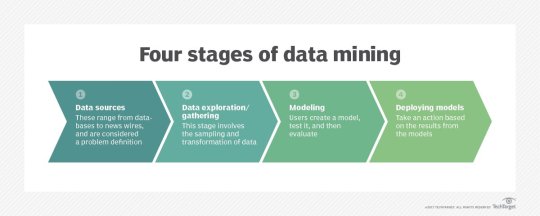
Types of data mining techniques
Various techniques can be used to mine data for different data science applications. Pattern recognition is a common data mining use case that's enabled by multiple techniques, as is anomaly detection, which aims to identify outlier values in data sets. Popular data mining techniques include the following types:
Association rule mining. In data mining, association rules are if-then statements that identify relationships between data elements. Support and confidence criteria are used to assess the relationships -- support measures how frequently the related elements appear in a data set, while confidence reflects the number of times an if-then statement is accurate.
Classification. This approach assigns the elements in data sets to different categories defined as part of the data mining process. Decision trees, Naive Bayes classifiers, k-nearest neighbor and logistic regression are some examples of classification methods.
Clustering. In this case, data elements that share particular characteristics are grouped together into clusters as part of data mining applications. Examples include k-means clustering, hierarchical clustering and Gaussian mixture models.
Regression. This is another way to find relationships in data sets, by calculating predicted data values based on a set of variables. Linear regression and multivariate regression are examples. Decision trees and some other classification methods can be used to do regressions, too
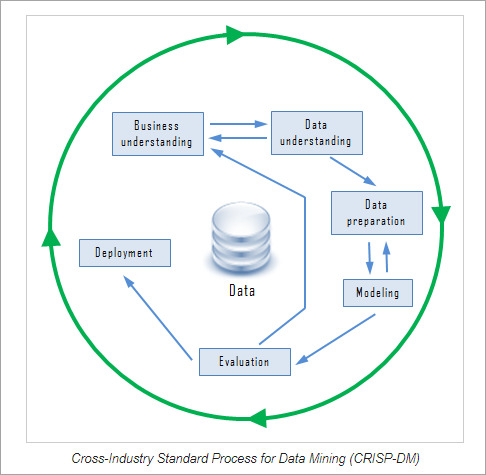
Data mining companies follow the procedure
#data enrichment#data management#data entry companies#data entry#banglore#monday motivation#happy monday#data analysis#data entry services#data mining
4 notes
·
View notes